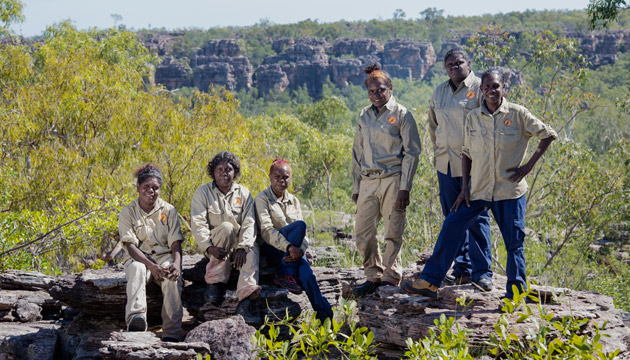There are now more female rangers on the Arnhem Land plateau, opening up job opportunities for Indigenous women and girls.
Story and photos David Hancock
Lorraine Namarnyilk is one of a growing number of Indigenous women who work as rangers on the Arnhem Land plateau in the Top End. They are as much at home in a helicopter or four-wheel-drive vehicle travelling between remote rock-art sites or walking through the bush setting traps to capture small animals for scientific research.
According to Lorraine, daluk (the word for “female” in the Kunwinjku language of western Arnhem Land) rangers enjoy being out bush together because, apart from the work, they get the chance to renew ties with country and family, show young people – particularly girls – traditional practices and educate their children about plants and animals in local dialects.
She is one of more than two dozen Indigenous women who work for Warddeken Land Management (WLM), a successful ranger group in northern Australia. The women are based at two small outstation communities – Manmoyi and Kabulwarnamyo – on the Arnhem Land plateau, east of Kakadu National Park.
Lorraine has been a ranger for three years and prefers living on the Stone Country at Kabulwarnamyo, with its shifting population of 40 to 60 people and collection of balabbalas – elevated living platforms covered by canvas – rather than in the larger community of Gunbalanya on the East Alligator floodplains, which can be noisy and overcrowded.
“Women together is a good way to work,” she says. “Sometimes we mix it up with the men but when we work together we have a lot of fun – we talk about culture, our family, the country we work in and our relationship to it.
“We sometimes take the children out and make sure they follow in the footsteps of the older people and know where they are from. I remember lots of stories that my grandfather used to tell me. When we go out with the younger ones we talk about what they have to do when they grow up."
This story excerpt is from Issue #115
Outback Magazine: October/November 2017










